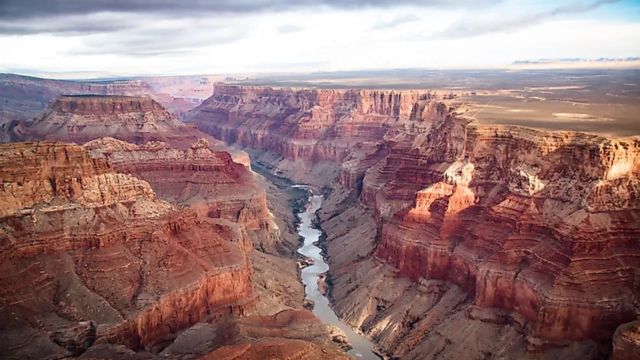In the vast tableau of the American landscape, canyons stand as timeless monuments to nature’s artistry and power. These geological wonders, immortalized in cowboy lore and epic tales of adventure, offer more than just breathtaking vistas; they encapsulate the spirit of exploration and the awe-inspiring complexity of the natural world.
While the Grand Canyon often steals the spotlight, a myriad of other canyons carve through the U.S., each with its own unique beauty and depth. Let’s embark on a journey to uncover the depths of the most majestic canyons across the United States.
America’s Majestic Canyons: A Deep Dive
- Hells Canyon: Towering at an astonishing depth of 7,993 feet, Hells Canyon reigns as the deepest river gorge in North America. Straddling the borders of Idaho, Oregon, and Washington, this canyon was sculpted by the mighty Snake River. With its geologic origins dating back 300 million years, Hells Canyon is a testament to the enduring forces of nature, offering a unique ecosystem and diverse microclimates across its vast depths.
- Kings Canyon: Nestled within California’s Sierra Nevada mountains, Kings Canyon plunges 7,700 feet, showcasing the raw power of glacial forces. Its rugged terrain and towering granite peaks tell a story of immense glacial activity, making it a sanctuary for diverse flora and fauna, including the ancient sequoias that stand as silent guardians of the canyon’s profound beauty.
- Grand Canyon: Carved by the Colorado River, the Grand Canyon’s depth of 6,093 feet offers a window into the Earth’s geological past. This Arizona landmark is a mosaic of colorful rock layers, each narrating the history of geological events that have shaped this iconic landscape over millions of years.
- Desolation Canyon: With a depth of 5,000 feet, Desolation Canyon in Utah is a testament to the erosive power of the Green River. Its sedimentary rock layers reveal a rich tapestry of geological history, making it an invaluable site for scientific study and exploration.
- Columbia River Gorge: Bridging Washington and Oregon, the Columbia River Gorge, at a maximum depth of 4,000 feet, is a dramatic testament to cataclysmic floods and the river’s relentless flow through the Cascade Range. Its varied climate zones foster a rich biodiversity and a mosaic of ecological communities.
- McKittrick Canyon: Situated in Texas’ Guadalupe Mountains National Park, McKittrick Canyon’s depth of 3,200 feet unveils a fascinating geological narrative of ancient marine environments. Its diverse plant life and paleontological treasures make it a window into the Permian period.
- Waimea Canyon: Dubbed the “Grand Canyon of the Pacific,” Waimea Canyon on Kauai, Hawaii, delves 3,000 feet into volcanic history. Its vibrant colors and dramatic vistas reveal the island’s dynamic volcanic activity and the erosive power of the Waimea River.
- Linville Gorge: In the heart of North Carolina, Linville Gorge’s 2,800-foot depth is carved by the Linville River. Surrounded by rugged ridges and ancient rock formations, it offers a glimpse into the region’s geological and historical legacy.
- Zion Canyon: Zion Canyon in Utah, descending 2,640 feet, is sculpted by the Virgin River. Its striking Navajo Sandstone cliffs and unique geological features make it a paradise for geologists and nature enthusiasts alike.
- Bighorn Canyon: Stretching across Montana and Wyoming, Bighorn Canyon’s 2,500-foot depth is a marvel of sedimentary geology, carved by the Bighorn River. Its tributary canyons and surrounding mountain ranges enrich the geological and ecological diversity of the region.
The Depths of Understanding
Defining a canyon’s depth involves more than simply measuring from rim to riverbed; it requires an understanding of geological processes, elevation range, and the dynamic interplay between land and water. The distinction between depth, wall height, and elevation range offers insights into the complex nature of these landforms and the forces that shape them.
In exploring these depths, we not only uncover the physical grandeur of the landscape but also deepen our appreciation for the intricate web of natural history that each canyon represents.
As we delve into the depths of America’s canyons, we’re reminded of the enduring allure of the unknown and the spirit of discovery that drives us to explore these natural cathedrals. The ongoing exploration and study of these canyons not only enrich our knowledge of the Earth’s geological history but also inspire a deeper connection to the natural world and the profound beauty it holds.

